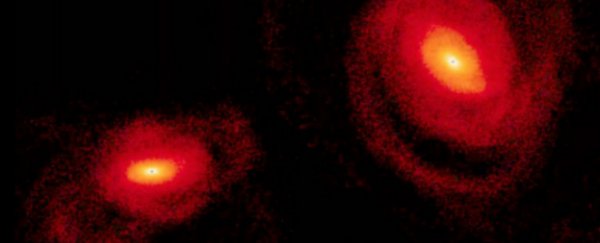The oddity has been nicknamed SDSS1133 and was spotted drifting in interstellar space around 2,600 light-years away from the centre of a dwarf galaxy.
Astronomers now believe that the object may in fact be the first black hole we've ever detected that's been orphaned as a result of a 2.7-billion-year-long collision with another galaxy.
SDSS1133 was originally classified as a supernova when it was first noticed in 2005. But now an international team of astronomers reports that the object has actually been observed by various instruments over the past 63 years, which makes it very unlikely that this is the case.
Instead, they believe it might be the first evidence of a black hole that was knocked out of its home galaxy, Markarian 177.
Here's an animation of how the collision would have looked, thanks to io9:

The object is only 40 light-years across at its brightest points. And it's also noticeably brightened over the past two years, the scientists write in the Monthly Notices of the Royal Astronomical Society, where the results were published.
An alternative theory is that SDSS1133 is an extremely rare type of star called a luminous blue variable. "But if that's the case, the researchers note, SDSS1133's near-continual eruption since 1950 would be the most persistent yet reported for that type of star," writes Sid Perkins for Science.
The astronomers will next year begin observing the ultraviolet wavelengths of the object in order to find out more about what it is.
But if the black hole theory is true, this will be the first find of its kind, and could change a lot of what we currently known about galaxies.
